Rain, pah, what rain. No fair weather fisherman here, not these days, I can't afford to be that choosy anymore. Twice week before last I've fished in the rain, my new Taimen wading jacket that came with a pair of waders I bought has done a fantastic job at keeping me dry.
A short three hour trip in persistent rain took me away from my usual rivers, experience tells me not to bother with my club rivers after a substantial amount of rain, the rivers colour up far too much to risk an hours drives only to end up finding unfavourable conditions. The river I fished can almost be guaranteed to be clear, even in the depths of winter. Arriving at lunchtime on Friday the 15th was no different despite a mornings worth of rain. I started the day fishing two nymphs with a small New Zealand indicator on the leader. A size ten short shank copper bead PTN and a size fourteen cream JP pupa were my choices.
Sitting on a log in the rivers margins while tackling up allows the immediate surroundings to settle from the minor disturbance caused by approaching and entering the river, it also allows you to observe the water ahead for any signs of fish. I caught on the second cast and the tally was up to three before I had moved my feet. The rain really helped to conceal me, usually you send tens of fish darting upstream as you make your way upriver; the biomass is huge, but in numbers not size and the ultra clear water can make things especially difficult.
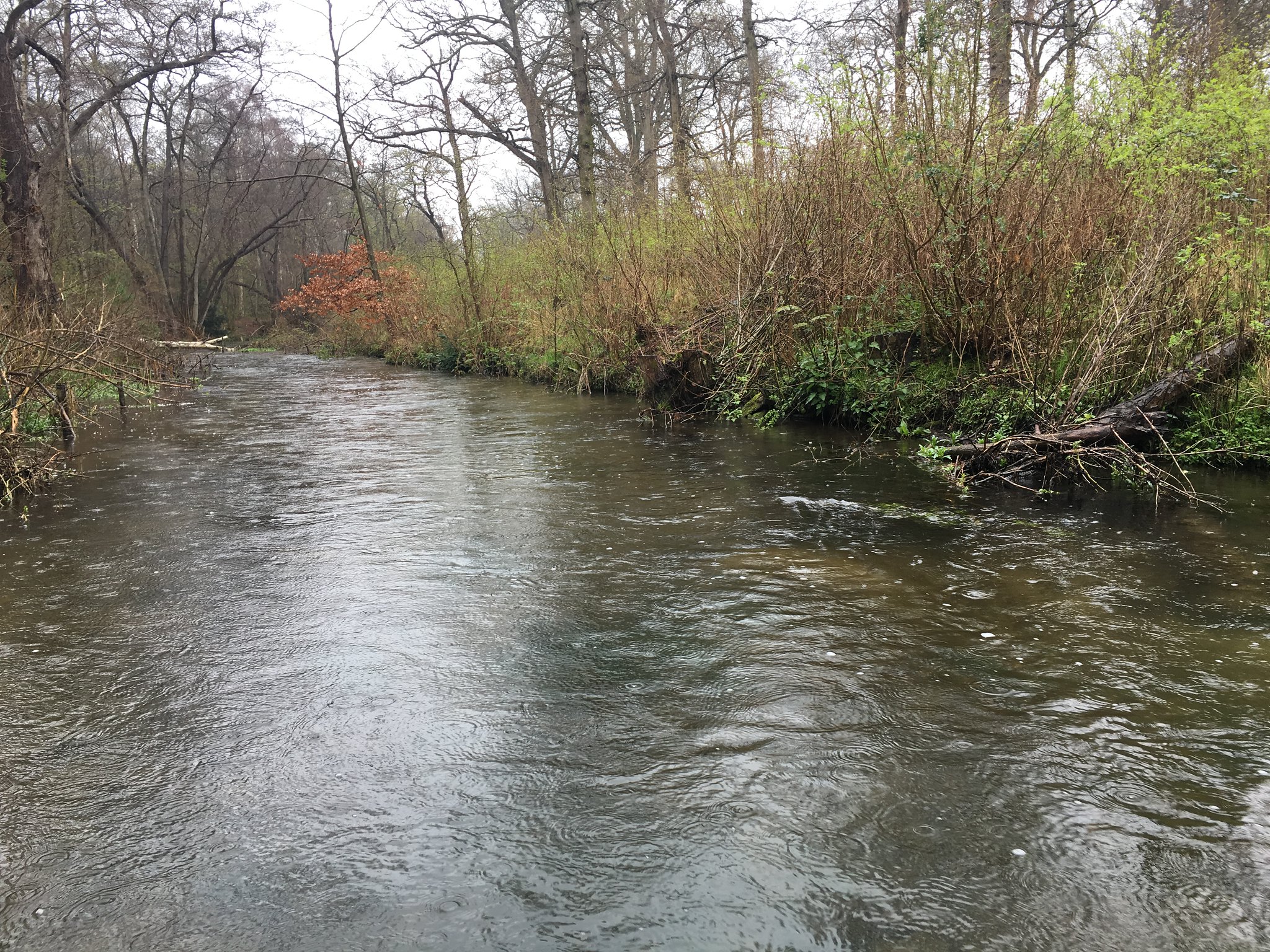 |
| Looking upstream, although clear the rain really helped to conceal my presence |
I have been toying with the idea of getting a GoPro, the first fifteen minutes would have made for some frenetic filming as fish after fish nabbed the flies as they drifted down. I was playing one fish which had darted down and was level with me when another trout took the remaining free fly, I've not had many double ups and the fight was interesting but short lived as one of them quickly shed the hook.
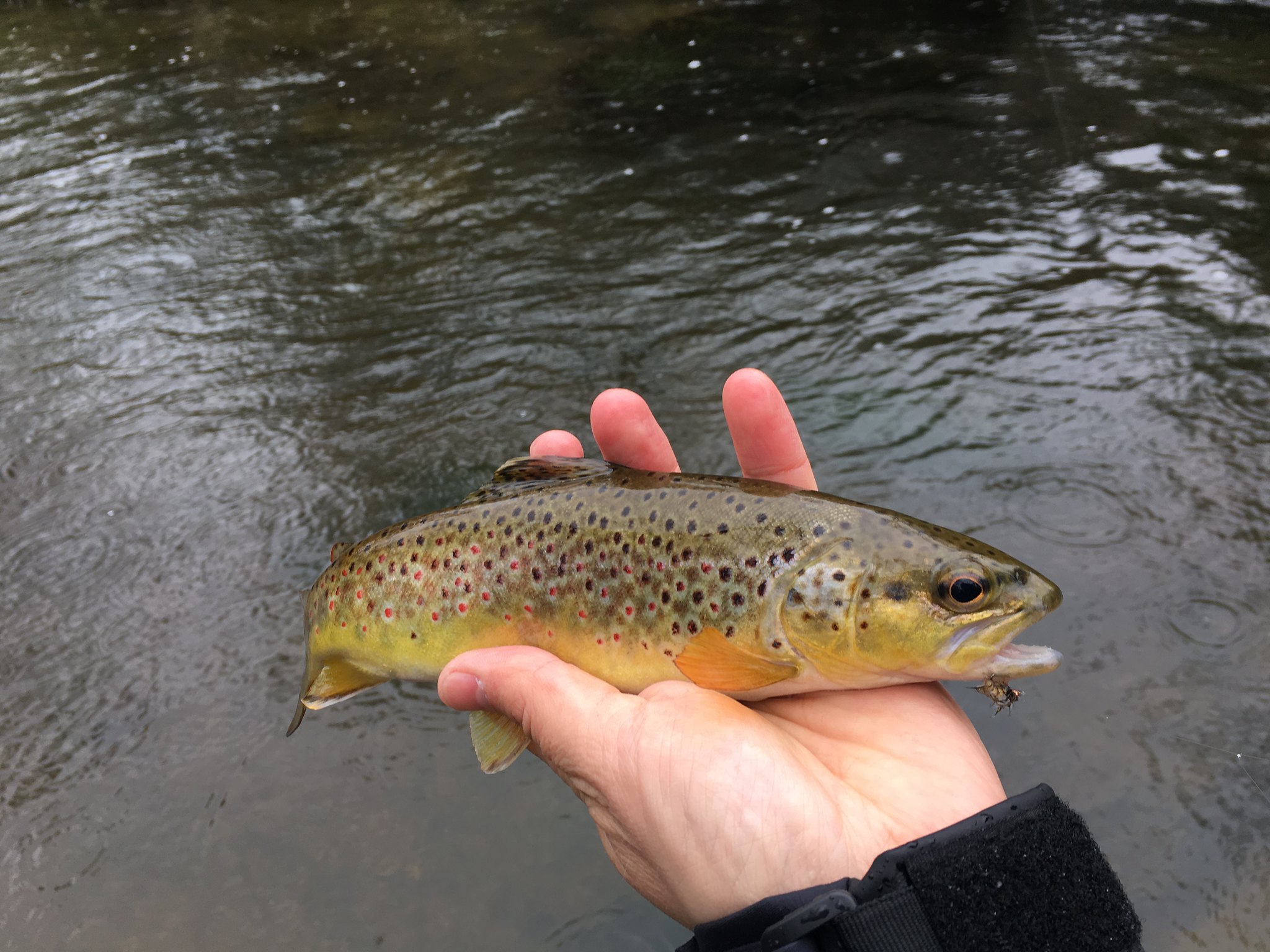 |
| Not many pictures, it's difficult in the rain - must invest in a waterproof camera |
The next two hours were much the same, short periods of frantic activity with a small number of fish caught in quick order as each new pool or run was fished and the overall tally steadily increased. Most of the trout came to the PTN on the point, however, the JP Pupa caught enough to earn its place on the leader and the New Zealand strike indicator performed superbly.
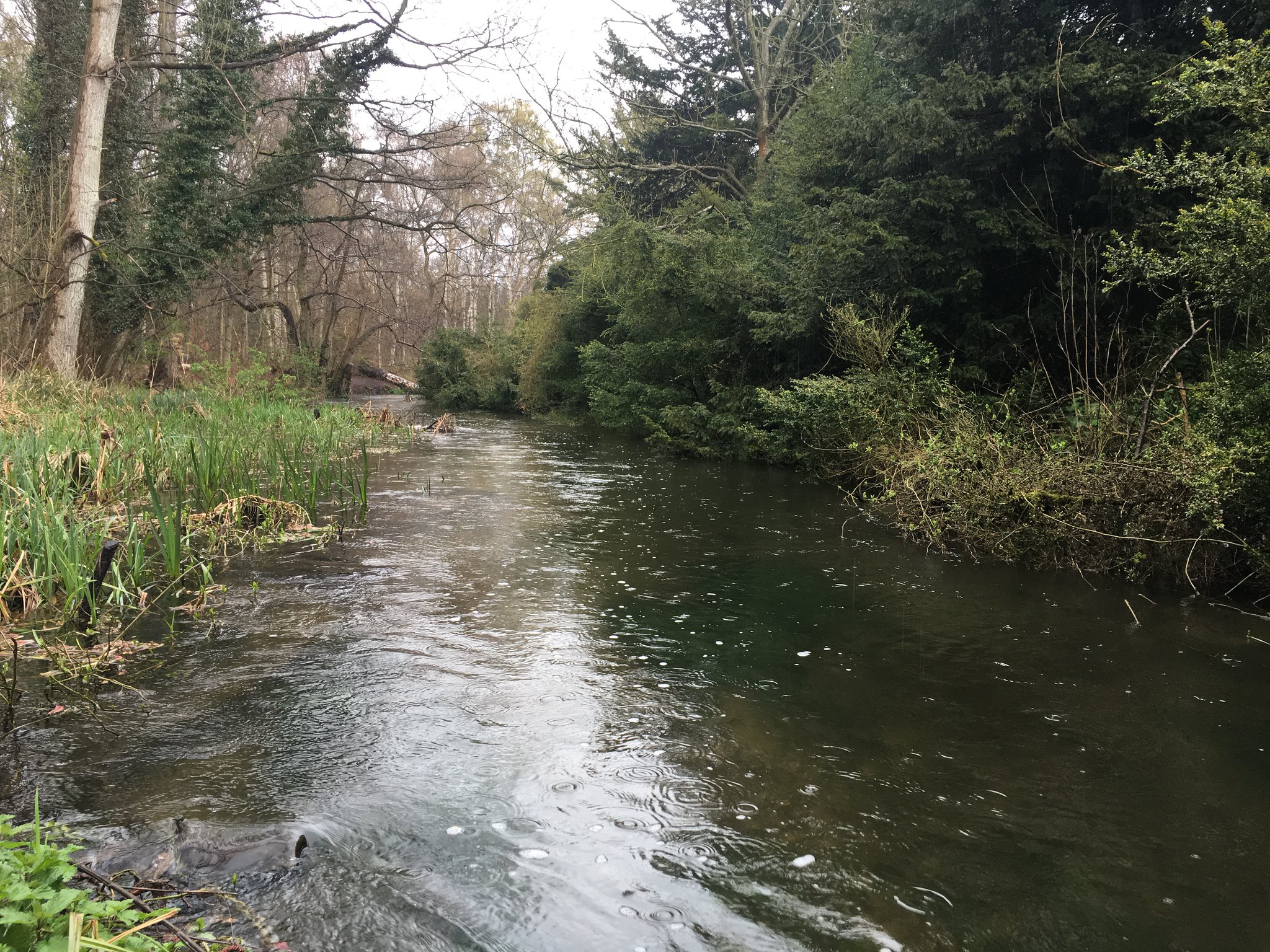 |
| Rising fish all the way up, I fished to just round the corner to the left |
I was conscious that time was ebbing away and there was still some areas I wanted to fish. Climbing out of the river I bypassed a large section of the river for no other reason than wanting to fish a particular stretch of water further ahead. Scanning the river in front of me, I saw a fish rise directly opposite where I was stood, another rising fish upstream only served to confirm I had found a good spot. Dropping slightly downstream of the first fish, I eased into the margins, thick sediment held together by bank-side vegetation oozed as my body weight sank while I settled into position. The river here has been narrowed, the fast water current quickly washes away any disturbance and by keeping a low profile I re-tackled without disturbing the fish in front of me.
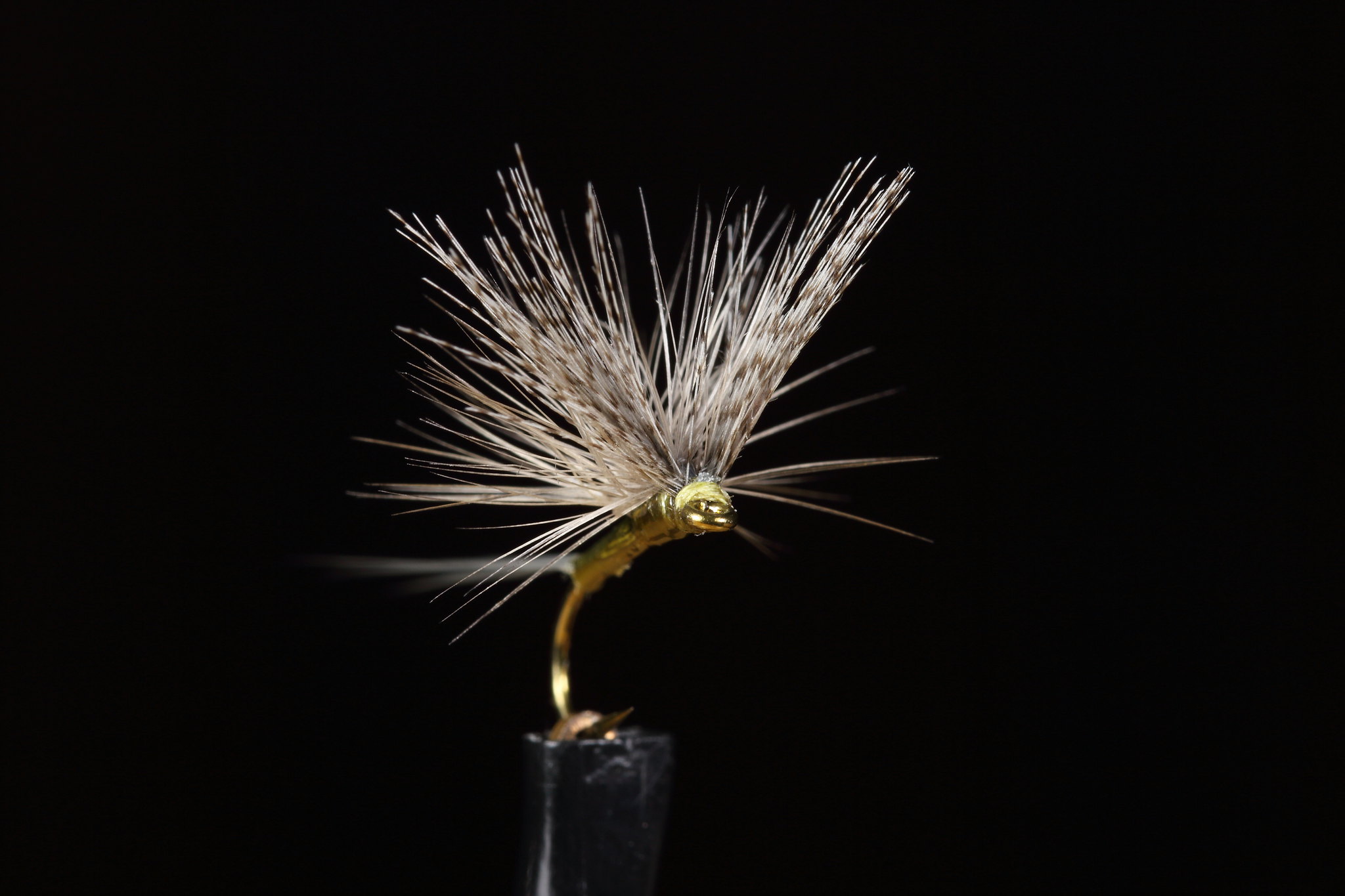 |
| Barbour Paraloop Dun |
A decent number of large dark olives were hatching off and now fully in position I could see fish rising to drifting duns all the way up the run, I had truly stumbled on what all early season fly-fishers hope for, a proper hatch of upwings. Catching a dun as it drifted down I could see that these were slightly smaller than expected and were best imitated with a size sixteen Barbour Dun. Stripping off all of the old tippet I tied on a fresh length to the furled leader, I use 0.129mm Drennan supplex and tied on the dry fly. I found it hard to properly apply floatant to the fly due to the cold wet weather, I normally use mucilin, but it just gunked up the fly, especially the mallard wings which tend to clump up when mucilin behaves like this; I really should look into some other alternatives, especially for use in colder conditions.
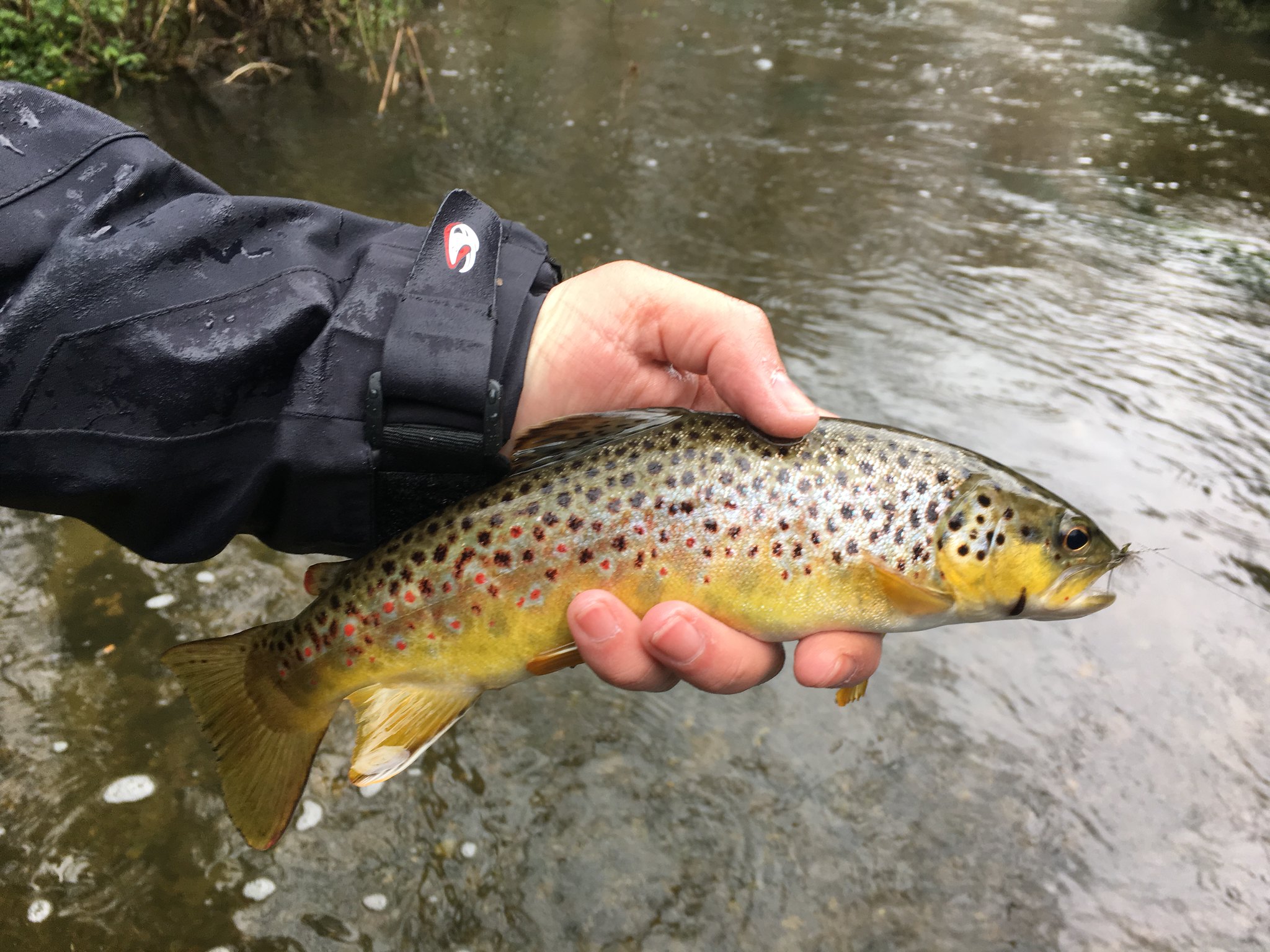 |
| On a dry-fly, that's what I fish for |
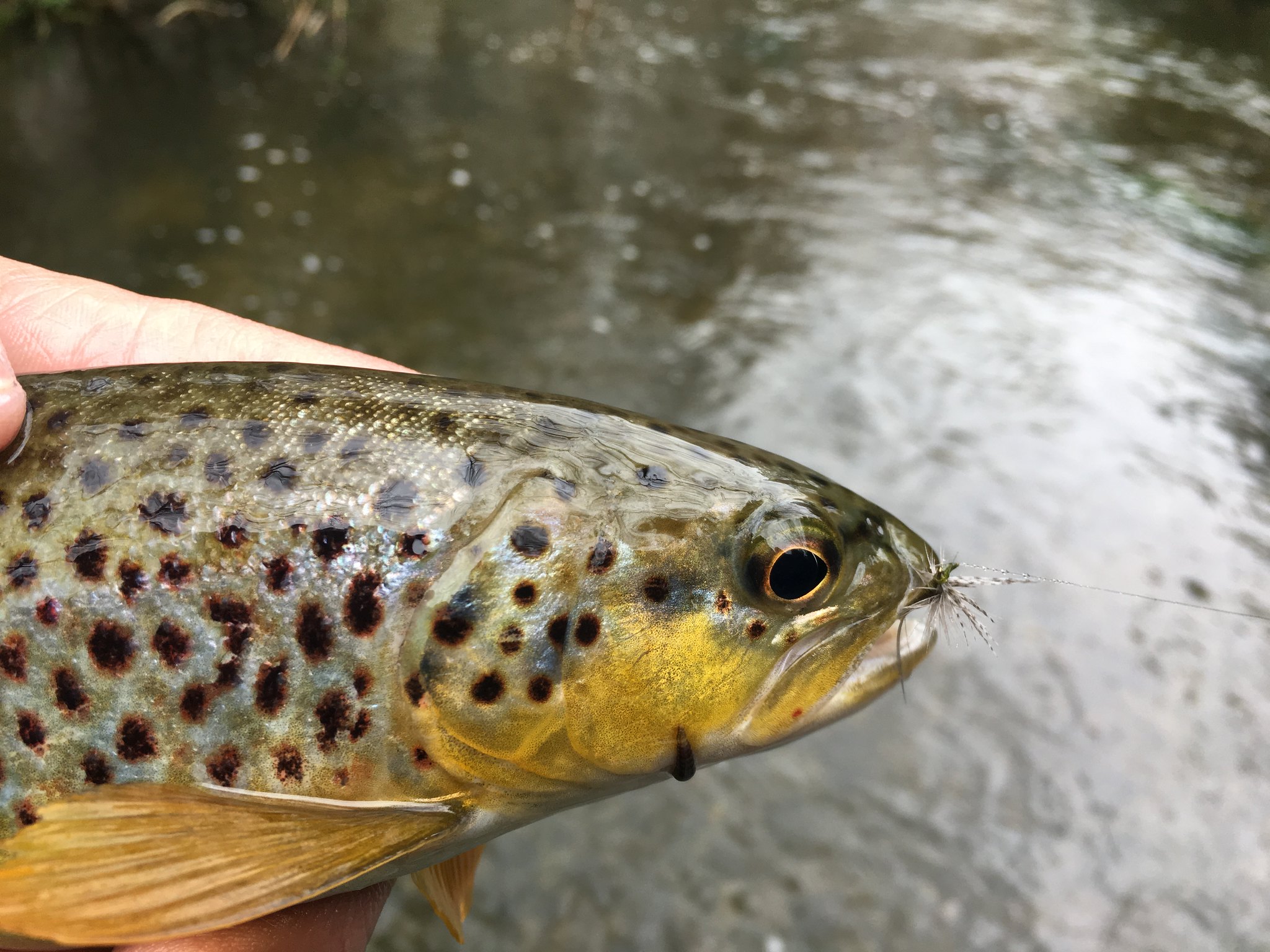 |
| Oddly this was only fish that didn't need the forceps to unhook |
I didn't catch the first fish in front of me, it mattered not as there were now so many fish rising all over the river, some were even leaping out of the water as the took hatching flies. I worked up the river and fished no more than twenty five yards of water and in around forty minutes I landed ten trout, changing fly once as it refused to float; I called it a day when I snagged up on a thick branch hidden by overhanging vegetation. One thing that really stuck in my mind was that every fish except on hooked on the barbour dun had to be unhooked with forceps, the fly was taken with that much enthusiasm, I think it is a great olive imitation. Despite the almost constant rain I'd had a great afternoon, foremost I was still dry and reasonably warm, besides I'd soon be warm walking back to the car. Nothing I caught was over eleven inches long, but that didn't matter, at last I had fished a decent hatch and found an area full of rising fish. Numbers wise, I kept an accurate record: thirty nine fish hooked, thirty four landed, ten on the dry-fly. It goes to show how well you can do even when faced with adverse conditions, I'm a firm believer in trying to get out regardless of weather conditions, it's only really dirty, high water that will stop me from getting out






No comments:
Post a Comment